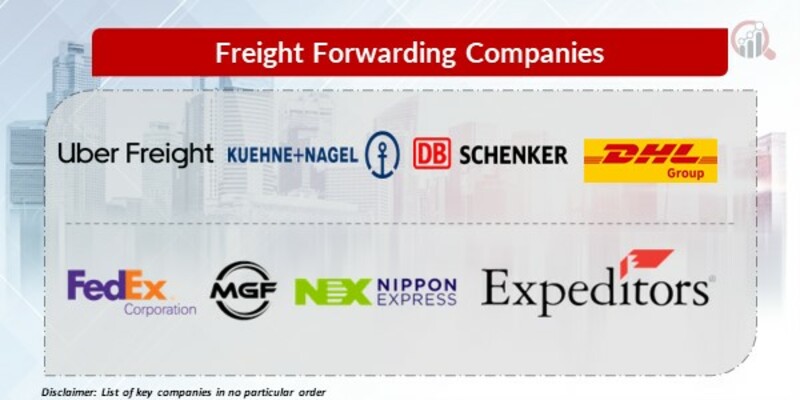Top Industry Leaders in the Freight Forwarding Market

The global freight forwarding market, a vital cog in the ever-turning wheel of international trade, is a dynamic landscape brimming with competition and constant evolution. With a projected growth trajectory of 4.8% from 2023 to 2032, reaching a staggering USD 302.6 billion, it's no surprise that players big and small are vying for a piece of the pie. So, let's delve into the intricacies of this competitive arena, exploring the strategies employed, the factors that dictate market share, and the latest developments shaping the industry.
Strategies for Success: A Multifaceted Approach
In this cutthroat market, success hinges on a well-crafted and multifaceted approach. Leading players like DHL Global Forwarding, Kuehne + Nagel, and DB Schenker have adopted a blend of strategies to stay ahead of the curve:
-
Diversification: Offering a comprehensive range of services across air, sea, road, and rail freight, catering to diverse customer needs and market segments. -
Specialization: Developing expertise in specific industries like e-commerce, pharmaceuticals, or automotive, providing tailored solutions and enhanced value. -
Technology Adoption: Embracing digital transformation through AI-powered logistics platforms, blockchain for secure transactions, and IoT for real-time shipment tracking, enhancing efficiency and transparency. -
Sustainability Focus: Implementing green logistics practices, reducing carbon footprint, and offering eco-friendly transportation options, aligning with growing environmental consciousness. -
Strategic Partnerships: Collaborating with airlines, shipping lines, and other logistics providers to expand network reach, optimize routes, and offer competitive pricing. -
Mergers and Acquisitions: Consolidating market share through strategic acquisitions and mergers, creating larger, more powerful entities with greater resources and expertise.
Factors Dictating Market Share: A Shifting Paradigm
While traditional factors like network size, brand recognition, and price competitiveness still play a role, the landscape is shifting. Today, agility, responsiveness, and customer-centricity are becoming increasingly crucial.
-
Supply Chain Resilience: The ability to navigate disruptions and adapt to unforeseen events like pandemics or geopolitical tensions is paramount. Building robust and flexible supply chains is key. -
Data-Driven Insights: Leveraging data analytics to optimize routes, predict demand, and personalize offerings is crucial for enhancing efficiency and customer satisfaction. -
End-to-End Visibility: Providing real-time tracking and proactive communication throughout the journey builds trust and fosters stronger customer relationships. -
Value-Added Services: Offering additional services like customs clearance, warehousing, and cargo insurance differentiates players and provides a competitive edge.
Key Companies in the Freight Forwarding market include
- Uber Freight LLC
- Kuehne+Nagel International AG
- Schenker Deutschland AG
- Deutsche Post DHL
- FedEx
- MGF
- Nippon Express Co., Ltd.
- Expeditors International of Washington, Inc.
- CEVA Logistics AG
- Hellmann Worldwide Logistics
Recent Developments
- In February 2024, C.H. Robinson developed new technology that creates a major efficiency in freight shipping: removing the work of scheduling an appointment at the place a load needs to be picked up and scheduling another appointment where the load needs to be delivered.
- In February 2024, DHL Global Forwarding partnered with Schneider Electric to design and launch an industry-first multi-modal shipping model, using sustainable aviation fuels (SAFs) to help improve the agility and reduce the environmental impact of its supply chain.
- In December 2023, Nippon Express Co., Ltd. which administers Nippon Express's East Asia Region, and Nippon Express Korea Co., Ltd., both group companies of NIPPON EXPRESS HOLDINGS, INC. (President: Mitsuru Saito), have launched a new international ocean freight service, "Busan Hub x Japanese Regional Ports," connecting the Port of Busan in South Korea and regional ports in Japan.

